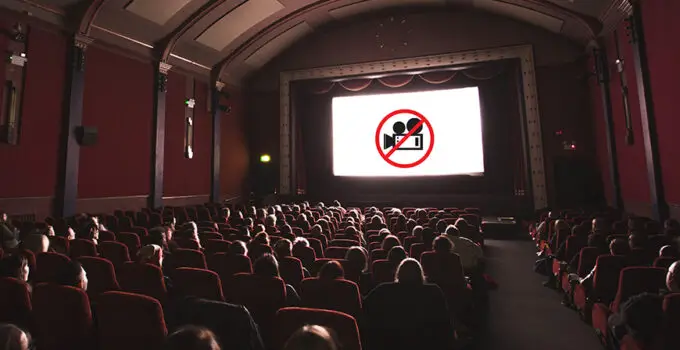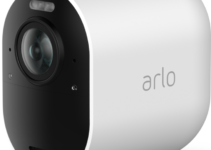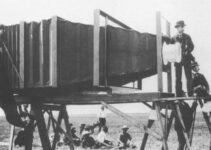Have you ever wondered if movie theaters are equipped with cameras? The answer is yes. Most modern movie theaters utilize surveillance cameras for various reasons.
These cameras are strategically placed in and around the theater to ensure the safety of both customers and staff. They help prevent theft, monitor audience behavior, and ensure compliance with safety protocols.
While some theaters might also use cameras to monitor the quality of the screening experience, the primary focus remains on security.
In this article, we will explore the role of cameras in movie theaters and their impact on the movie-going experience.
Do movie theaters have cameras?
Yes, movie theaters do have cameras. Surveillance cameras are commonly used in and around theaters to enhance security and ensure the safety of both patrons and staff.
These cameras are typically placed in lobbies, hallways, and auditoriums to monitor crowd behavior, prevent theft, and deter any potential criminal activity.
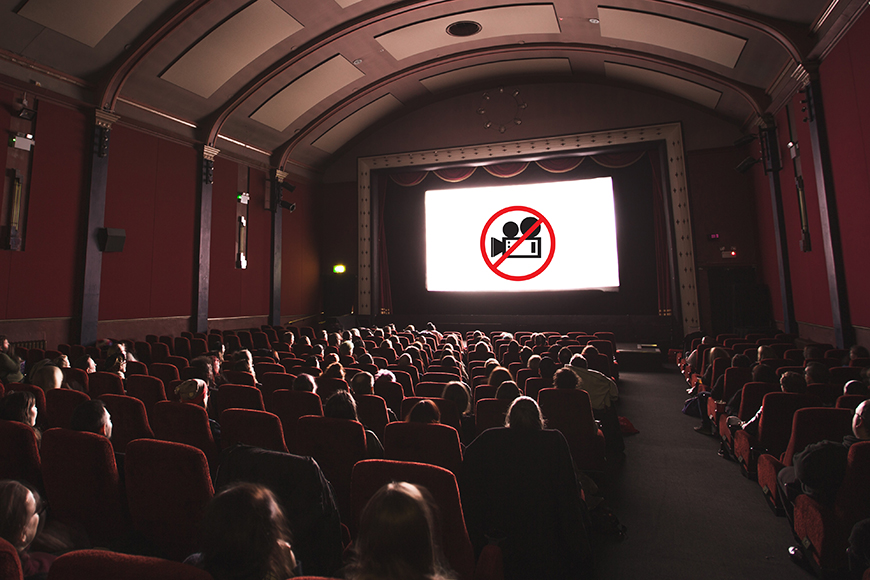
Additionally, cameras help in ensuring the proper functioning of equipment, such as projectors and sound systems, during screenings. In some cases, theaters may also use cameras to observe audience reactions to films for marketing and operational purposes.
While cameras are essential for maintaining safety and smooth operations, they are not usually focused on the actual movie-watching experience, as privacy concerns are also taken into account. Overall, cameras are an important part of a theater’s infrastructure, helping to maintain a secure and efficient environment for moviegoers.
What kind of cameras do movie theaters have?
Movie theaters typically use a range of cameras, primarily focused on surveillance and operational monitoring.
Most commonly, they use CCTV cameras (Closed-Circuit Television), which include both analog and digital models.
These cameras are often equip with high-definition capabilities to capture clear footage of public areas, auditoriums, and hallways.
PTZ (Pan-Tilt-Zoom) cameras are frequently use in larger theaters, as they allow operators to remotely adjust the camera’s position and zoom in on specific areas for detailed monitoring.
Additionally, some theaters use infrared cameras to monitor low-light conditions, especially in dark theaters during screenings.
Network cameras that transmit footage over the internet are becoming more common for easy remote monitoring.
For operational purposes, cameras integrate into projection equipment are used to ensure the quality of screenings and monitor the performance of projectors and sound systems.
These cameras enhance security, efficiency, and customer experience within movie theaters.
List of Camers that movie theater installed
Here’s a table outlining the types of cameras typically installed in movie theaters:
| Camera Type | Description | Purpose |
|---|---|---|
| CCTV Cameras | Closed-Circuit Television cameras, either analog or digital, for general surveillance. | To monitor public areas, entrances, and auditoriums for security. |
| PTZ Cameras | Pan-Tilt-Zoom cameras allow remote control to adjust camera angles and zoom in on specific areas. | To focus on specific areas, such as entrances or suspicious activity. |
| Infrared Cameras | Cameras that use infrared technology to capture footage in low-light or dark environments. | To monitor theaters during screenings when lights are off. |
| Network Cameras | Cameras that transmit footage via the internet for remote monitoring. | To allow theater management to monitor security remotely. |
| Projection System Cameras | Cameras integrated with the theater’s projection equipment, usually high-quality digital cameras. | To monitor the projector’s performance and ensure proper screening quality. |
These cameras collectively help maintain safety, monitor operations, and enhance the movie-going experience.
Types of Cameras in Movie Theaters
Here’s a table explaining the types of cameras found in movie theaters:
| Camera Type | Description | Main Purpose |
|---|---|---|
| CCTV Cameras | Closed-Circuit Television cameras, either analog or digital, used for surveillance in public areas. | General security monitoring, including lobbies and auditoriums. |
| PTZ Cameras | Pan-Tilt-Zoom cameras with remote control, allowing movement and zooming in on specific areas. | Focus on specific areas for detailed monitoring or incident response. |
| Infrared Cameras | Cameras designed to capture footage in low-light conditions, using infrared technology. | Surveillance in dark theater environments during screenings. |
| Network/IP Cameras | Digital cameras connected to a network for remote access, often with high-definition capabilities. | Remote monitoring and security management. |
| Projection System Cameras | Cameras integrated with the movie theater’s projection equipment to monitor the display and sound systems. | Ensuring the quality and performance of the movie screening. |
These cameras play key roles in enhancing security, operational efficiency, and maintaining the quality of the movie-watching experience.
Legality of Movie Theater Cameras
The legality of movie theater cameras primarily depends on their use and the jurisdiction in which the theater operates. In general, movie theaters have the legal right to install cameras for security and operational purposes, as long as they adhere to privacy laws.
Cameras used in public areas like lobbies, hallways, and entrances are typically allowed, as these spaces are not considered private.
However, surveillance within the actual movie theater auditorium must be handled carefully to avoid infringing on patrons’ privacy rights. Most theaters place cameras in such a way that they don’t record the movie-watching experience, ensuring compliance with privacy regulations.
In many countries, theater management must inform customers about the presence of cameras through visible signage or disclaimers.
Additionally, using cameras for recording audio or video of the audience without consent could violate privacy laws, so theaters are careful to use cameras solely for security and operational purposes.
How to Tell If There Are Cameras in the Movie Theater
Determining if there are cameras in a movie theater can be subtle, as most theaters install them discreetly to avoid disrupting the viewing experience.
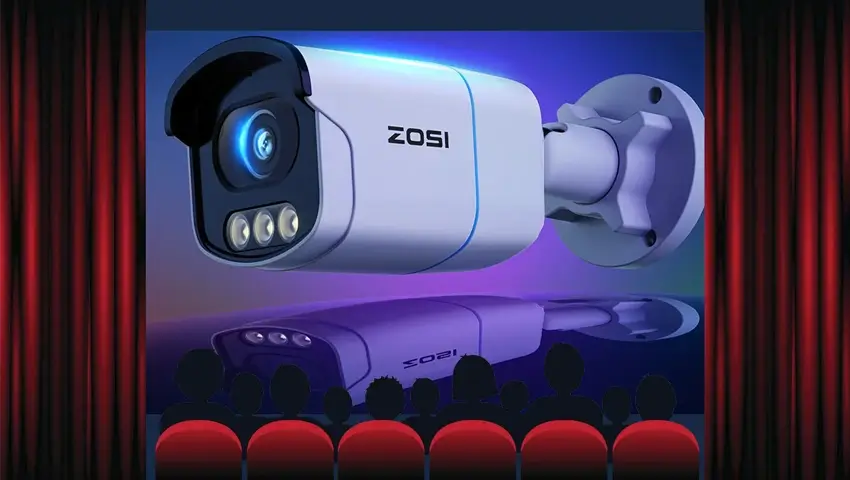
However, there are a few ways to tell if cameras are present:
- Look for Signage: Many theaters will display signs indicating the use of surveillance cameras for security purposes. These might be located at entrances or in common areas like lobbies.
- Observe the Environment: Look for small, round, or dome-shaped objects on the ceiling or walls. These are often surveillance cameras, especially in hallways or near the theater’s entrances.
- Check for Security Personnel: If there are security staff or uniformed employees in the theater, it’s likely that cameras are in place for monitoring purposes.
- Infrared Lighting: In dark theaters, you may notice faint red lights around the room. These are often infrared lights associated with night-vision cameras.
Remember, cameras are typically used for security, not to invade privacy.
Camera Recommendations for Movie Theaters
When selecting cameras for a movie theater, it’s essential to prioritize quality, security features, and ease of integration. Here are some camera recommendations:
- Hikvision DS-2CD2387G2-L: This high-definition IP camera offers excellent image quality, night vision capabilities, and motion detection, ideal for general security surveillance in theaters and lobbies.
- Axis M3047-P: A compact, discreet camera with 360-degree coverage, perfect for monitoring large auditoriums without disturbing the audience. It provides excellent resolution and remote access.
- Dahua N52A Series PTZ Camera: For areas requiring zoom and panning capabilities, the PTZ camera allows theater staff to monitor specific sections of the theater or parking lot with ease. It offers remote control and high-definition footage.
- Nest Cam IQ Outdoor: If you’re seeking a more accessible option, this camera offers smart features like facial recognition and clear video, making it suitable for external surveillance.
These cameras combine durability, high resolution, and user-friendly features, ensuring safety and smooth operations.
How to detect night vision camera in theater
Detecting a night vision camera in a theater can be tricky, but there are several methods you can try:
- Look for Infrared Lights: Night vision cameras often use infrared (IR) LEDs to capture clear footage in low-light conditions. These infrared lights may appear as small red or faintly glowing lights around the camera. In a dark theater, these can sometimes be visible, especially when the theater lights are off.
- Use Your Smartphone Camera: Infrared lights are typically invisible to the naked eye but can be detected using your smartphone camera. Point your phone at suspected areas where cameras might be, and look for small red or purple glows through the phone’s screen, which indicates infrared activity.
- Check the Ceiling: Look for small, dome-shaped or circular devices on the ceiling, often placed for discreet surveillance. These could be infrared-capable cameras designed for security.
Remember, most theaters use night vision cameras for security and to ensure a safe, enjoyable experience for all patrons.
Do movie theaters have cameras reddit
Yes, movie theaters do have cameras, and many Reddit users discuss this topic to clarify their presence. Surveillance cameras are commonly used in theaters to ensure safety, monitor behavior, and prevent theft.
Most cameras are strategically placed in areas such as entrances, lobbies, hallways, and sometimes near the projection room.
Some theaters also install cameras in auditoriums for security, but they are typically designed to avoid capturing the movie-watching experience to respect privacy.
Reddit threads mention that while cameras are present for general security purposes, they are unlikely to record the audience during the film. Users also point out that theater staff often have access to these feeds to monitor the venue, ensuring a safe environment for moviegoers.
In many cases, theaters are legally required to inform patrons about surveillance cameras through visible signage. However, cameras are primarily for security and operational purposes rather than watching the audience.
Does AMC have cameras in the theater
Yes, AMC theaters do have cameras installed for security and operational purposes. Like most movie theaters, AMC utilizes surveillance cameras to monitor public areas, such as the lobbies, hallways, and parking lots, to ensure the safety of patrons and staff.
These cameras help deter theft, monitor crowd behavior, and ensure a safe environment. Some AMC theaters also use cameras in the auditoriums, but they are typically placed to avoid recording moviegoers during the film to respect privacy.
These cameras are mainly used to monitor for issues like misconduct or security concerns.
Additionally, AMC may use cameras in their projection rooms to ensure the quality of the movie presentation, such as checking the functionality of projectors and sound equipment.
While AMC, like many theaters, may have some level of surveillance, it is primarily for security and operational purposes, not for monitoring moviegoers’ actions during a screening.
Couple night vision cameras in movie theaters
Night vision cameras are commonly used in movie theaters for security and surveillance purposes, especially in dark environments like auditoriums.
These cameras are equipped with infrared (IR) technology, which allows them to capture clear images in low-light conditions without disrupting the movie-watching experience. They are typically discreet, designed to monitor entrances, hallways, and other public areas while avoiding direct focus on the audience during a film.
In larger theaters, night vision cameras can be placed strategically to ensure the safety of patrons and staff without being intrusive.
They are particularly useful for monitoring for any disruptive behavior, theft, or other security concerns in darkened environments.
The cameras’ infrared lights are usually invisible to the naked eye, but their presence is crucial in maintaining a safe and secure environment. While these cameras help protect both customers and staff, they do so without infringing on privacy, ensuring the audience’s focus remains on the film.
Do movie theaters have cameras Cinemark
Yes, Cinemark theaters do have cameras installed for security and operational purposes. Like most movie theater chains, Cinemark uses surveillance cameras throughout their venues to ensure the safety of both patrons and staff. These cameras are typically placed in high-traffic areas such as lobbies, hallways, and entrances, as well as in parking lots for additional security.
Cinemark may also use cameras in the auditoriums, though they are generally discreet and positioned to avoid capturing moviegoers during screenings, respecting patrons’ privacy.
Cinemark cameras are primarily used for monitoring crowd behavior, preventing theft, and responding to security issues quickly.
Additionally, cameras can help monitor equipment and projection systems to ensure the quality of the movie presentation.
While Cinemark aims to provide a safe and enjoyable experience for moviegoers, their surveillance systems are in place to maintain order and monitor potential security concerns within their theaters.
Where are the cameras in movie theaters
Cameras in movie theaters are typically placed in key areas for security and operational purposes. You’ll often find them in lobbies, hallways, and entrances, where they monitor the flow of patrons and deter any criminal activity, such as theft or disturbances.
Parking lots may also be equipped with cameras to ensure the safety of moviegoers as they enter or exit the theater.
In auditoriums, cameras are usually discreet and positioned in corners or high on walls, facing areas like the aisles, but they are placed to avoid capturing the audience during the film. They help monitor for any security issues, such as unauthorized recording or disruptive behavior, while respecting privacy.
Projection rooms also have cameras to ensure equipment like projectors and sound systems are functioning properly during screenings.
Cinemas are careful to balance security with privacy, so cameras are generally not intrusive to the movie-watching experience.
Does AMC have cameras in the theater Reddit
Yes, AMC theaters do have cameras installed, and this topic is often discussed on Reddit. Users commonly share that AMC uses surveillance cameras in various areas of the theater for security purposes.
These cameras are usually positioned in lobbies, hallways, and entrances to monitor the flow of customers and ensure safety. Some theaters may also have cameras in the auditoriums, but they are discreetly placed to avoid infringing on patrons’ movie-watching experience.
Reddit users note that AMC’s cameras are primarily used to deter criminal activity, monitor for disruptive behavior, and ensure the overall safety of moviegoers and staff.
Cameras in projection rooms help ensure the quality of screenings, monitoring projectors and sound systems.
While many are curious about surveillance, AMC generally uses cameras for operational and security needs, and their presence is often acknowledged through signage, which is required by law in many places.
Movie theater camera footage
Related faq’s
Do theaters have cameras in the auditoriums?
Yes, many theaters have cameras in the auditoriums, but they are typically discreetly placed to avoid disturbing moviegoers.
These cameras are primarily used for security purposes, such as monitoring for disruptive behavior, ensuring safety, and preventing illegal activities like piracy or theft.
They are usually positioned in the back or corners of the auditorium, focusing on aisles and seating areas rather than the screen or audience.
The cameras help staff respond quickly to incidents while respecting patrons’ privacy, as they are not meant to capture the movie-watching experience itself.
I am a movie theater employee, ask me anything you want to know!
That’s great! As a movie theater employee, I’d love to know:
- What’s the most common issue or question you deal with from moviegoers?
- How do you manage crowd control during busy times like weekends or opening nights?
- Are there any behind-the-scenes processes to ensure movie screenings run smoothly?
- What kind of training do employees receive for handling emergencies or customer complaints?
- Do you have any interesting or funny experiences working at the theater?
- How does your theater monitor security or manage camera footage to maintain safety?
Do movie theaters have security cameras and are they able to catch people having sex in the middle of the movies?
Yes, movie theaters typically have security cameras installed in various areas like lobbies, hallways, and sometimes in auditoriums, primarily for safety and security purposes.
While these cameras can monitor for disruptive behavior or illegal activities, they are generally positioned in a way that avoids recording the moviegoers directly. In the event of inappropriate behavior, like people engaging in sexual activity, the cameras could catch the actions if they occur in visible areas, such as the aisles or near exits.
Theater staff would likely intervene promptly to handle such situations discreetly and appropriately.
Hidden cameras in movie theatres
Hidden cameras in movie theaters are typically not used for surveillance, as most theaters prioritize security through visible cameras in common areas like lobbies and hallways. However, some patrons may worry about hidden cameras in auditoriums.
In general, theaters avoid placing covert cameras in areas where they could infringe on privacy.
Instead, security cameras are often strategically placed to monitor for behavior like theft or disruption, but they do not focus on recording moviegoers’ actions during screenings. Any use of hidden cameras would likely be illegal and unethical, as it would violate privacy rights.
Do movie theaters have CCTV camera?
Yes, movie theaters typically have CCTV (closed-circuit television) cameras installed for security and monitoring purposes.
These cameras are commonly found in high-traffic areas such as lobbies, hallways, entrances, and parking lots. In some theaters, CCTV cameras are also discreetly placed in auditoriums to monitor for disruptions, theft, or inappropriate behavior.
The footage captured by these cameras helps theater staff maintain a safe environment, ensuring the safety of patrons and staff.
While these cameras are used for security, they do not typically record moviegoers during the film, as they are positioned to avoid infringing on privacy.
Are there security cameras in movie theaters? Why or why not?
Yes, movie theaters typically have security cameras installed for safety and operational reasons. These cameras are used to monitor high-traffic areas like lobbies, hallways, entrances, and parking lots to ensure the security of patrons and staff.
They help deter theft, prevent disturbances, and provide evidence in case of emergencies or incidents. In some cases, cameras may also be discreetly placed in auditoriums to monitor for disruptive behavior or illegal activities.
The presence of these cameras is generally for security and safety, rather than for monitoring the audience’s behavior during the movie.
Regal Cinema employees, are there cameras inside the theater rooms?
Yes, Regal Cinemas typically has cameras inside theater rooms, but they are discreetly positioned to avoid infringing on the movie-watching experience.
These cameras are mainly used for security purposes, such as monitoring for disruptive behavior, preventing theft, and ensuring the safety of patrons and staff.
They are usually placed in corners or back areas of the auditorium, focusing on aisles and seating areas rather than the screen or audience. While Regal Cinemas uses cameras to maintain a safe environment, they are not intended to record moviegoers or invade privacy during the screening.
Does theater staff confront lovers that are unaware they can be seen with your night-vision surveillance cameras?
Theater staff typically do not confront couples or individuals engaging in inappropriate behavior unless it’s disruptive or against theater policies.
While night-vision surveillance cameras may capture activity in dark auditoriums, their primary purpose is for security and safety, such as detecting illegal activities or preventing disturbances. If staff notices such behavior, they might discreetly intervene to maintain a comfortable environment for all patrons.
Generally, movie theaters aim to respect privacy while ensuring a safe and enjoyable experience, and any intervention would be handled with discretion and professionalism.
Do Indian movie theaters have cameras inside the halls?
Yes, many Indian movie theaters have cameras installed inside the halls, primarily for security purposes. These cameras are strategically placed to monitor the audience and detect any disruptive behavior, illegal activities like piracy, or safety concerns.
However, the cameras are typically positioned to avoid recording moviegoers directly during screenings, respecting their privacy.
The main focus of these cameras is to maintain a safe environment for both the patrons and staff. Additionally, they can help theater management address issues promptly, such as disturbances or emergencies, ensuring a smooth movie-watching experience.
Do movie theaters have night vision cameras that record the customers in the theatre during a movie?
Movie theaters may have night-vision cameras for security purposes, but they are generally not used to record customers during a movie.
These cameras are typically installed in darkened auditoriums to monitor for illegal activities, such as piracy or disruptive behavior.
They are equipped with infrared technology that allows them to capture clear images without disturbing the moviegoers.
However, these cameras focus on aisles or specific areas of the theater and are positioned discreetly to respect patrons’ privacy. The footage is used for security and operational purposes, not for recording the audience during the screening.
Are there night vision cameras in movie theaters?
Yes, some movie theaters use night-vision cameras for security purposes, especially in darkened auditoriums. These cameras are equipped with infrared technology, allowing them to capture clear footage without disturbing moviegoers.
They are typically placed in discreet locations, such as the back corners of the theater or near the aisles, to monitor for illegal activities like piracy or to address any disruptive behavior.
The cameras are not intended to record the audience during the movie but to ensure safety and security. They help theater staff respond quickly to any incidents while maintaining privacy for patrons.
Do movie theaters have cameras inside the movie?
Movie theaters typically do not have cameras inside the movie itself. However, they do have surveillance cameras in other areas, such as lobbies, hallways, and auditoriums, primarily for security and safety purposes.
In auditoriums, cameras are discreetly placed to monitor for disruptive behavior or illegal activities like piracy.
These cameras are generally focused on aisles or seating areas, and they do not record the actual film or audience during the screening. The main goal is to ensure a safe environment for moviegoers while respecting their privacy during the viewing experience.
Does AMC have cameras in the theater rooms?
Yes, AMC theaters typically have cameras installed in theater rooms, though they are discreetly placed to avoid disturbing moviegoers.
These cameras are primarily used for security purposes, such as monitoring for illegal activities (like piracy), disruptive behavior, and ensuring the overall safety of patrons and staff.
Cameras are usually positioned in corners or high on the walls to monitor aisles and seating areas, rather than capturing the audience directly. While they serve a security function, the cameras are not intended to record the movie-watching experience and respect the privacy of patrons during screenings.
Can you get kicked out of a movie theater for making out?
Yes, you can be asked to leave a movie theater for making out if it becomes disruptive or inappropriate.
Movie theaters are public spaces, and while light affection might be tolerated, excessive or public displays of intimacy can disturb other patrons or violate the theater’s code of conduct.
Staff may intervene if the behavior distracts others, especially if it’s affecting the overall movie experience.
If the situation persists, you could be asked to leave to ensure a comfortable and respectful environment for all moviegoers. Always be mindful of your surroundings and the comfort of others in public spaces.
Conclusion
In conclusion, most movie theaters do have cameras installed for security and safety purposes.
These cameras are typically place in common areas like lobbies, hallways, and auditoriums to monitor for theft, disruptive behavior, and to ensure the safety of both patrons and staff.
While some theaters may have discreet cameras in the auditorium, they are generally position to monitor aisles and seating areas, not to record moviegoers directly.
These cameras are primarily used for security and operational purposes, ensuring a smooth and safe movie-watching experience for everyone involve.

